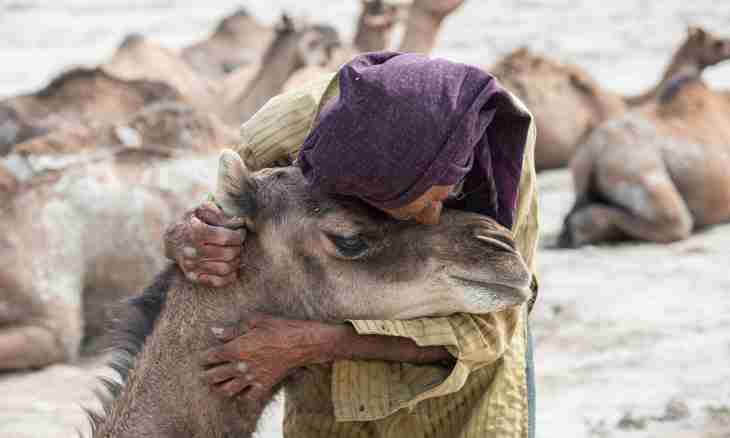Camels belong to the category of ruminant mammals. They were cultivated one thousand years ago. In food the camels are unpretentious and with pleasure eat practically any, food offered them.
Camels are very much appreciated by many people. It is connected first of all with benefit which is brought by these animals. Contents them does not deliver special work, and animals several times surpass a horse in endurance. There is an interesting legend of camels. In Jerusalem there are gate which received the name "Eye of a needle". In ancient times they played a role, so-called, customs. On camels transported goods for trade which quantity could be limited. Animals were banished through narrow passes and if because of the cargoes they could not pass through gate, then excess bales were forbidden to be taken through trade border.
Camel food in the habitat
The camel under natural conditions eats even such vegetable food which many representatives of fauna do not risk to taste. In this case prickles and cacti mean. The main requirement of an organism of a camel is salt. Desert plants just also differ in the high content of this component. Besides, animals can use very salty water which is pernicious for most of desert inhabitants.
Thanks to numerous callosities on a body, camels do not feel hot desert sand therefore can lie on it even in open territories.
In search of salt the camel is constantly. The animal eats salty clay which is formed in the natural way in the territories deprived of vegetation. The ability to eat rough and even prickly food is caused by the special structure of a mouth of a camel. His mucous membranes do not feel pain at all. Roots of some desert plants contain the increased moisture content. This kind of food also draws attention of camels during the periods of a special drought. Favourite vegetable sterns for animals are the desert acacia and a saxaul. In total in the desert more than 50 species of a grass, bushes and trees which are not suitable in food to the majority of animals grow, but are willingly eaten by camels.
Hump – a fat sourceThere is a popular belief that in a hump of a camel liquid accumulates therefore the animal can do long time without water. Really, the hump is necessary for it for completion of vital forces and energy in the period of lack of food and water, only on his back not liquid, but fat accumulates. The hump is a camel not only a fat source, but also is biological feature, favorable in the conditions of the desert. The fact is that camels very economically spend moisture and energy. They do not sweat at all. They are helped with it by humps. If fat was distributed on all body of an animal, then process of its cooling under the scorching beams of the sun would be impossible. The camel has an unusual food preference. If the vegetable forage does not manage to be found, then they can eat bones of corpses and a skin of dead animals. At desert reservoirs camels infrequent guests. Animals come here once in several weeks.
Features of food of camels in bondage
One of the main features of camels is the ability long time to do without food and water. This fact should be considered when keeping an animal in bondage. Starvation for a camel – the normal state, and a reforage can become the cause of numerous diseases up to pernicious obesity.
The camels who appeared on green meadows can die of a lack of food. More precisely – from a lack of salty food. Excessive consumption of a grass leads to dehydration of an organism of this animal.
Domestic camels eat the most various forages – hay, grain and bean crops, crackers and flour. Besides, there are facts confirming that these animals show a particular interest in soups and buckwheat cereal.

